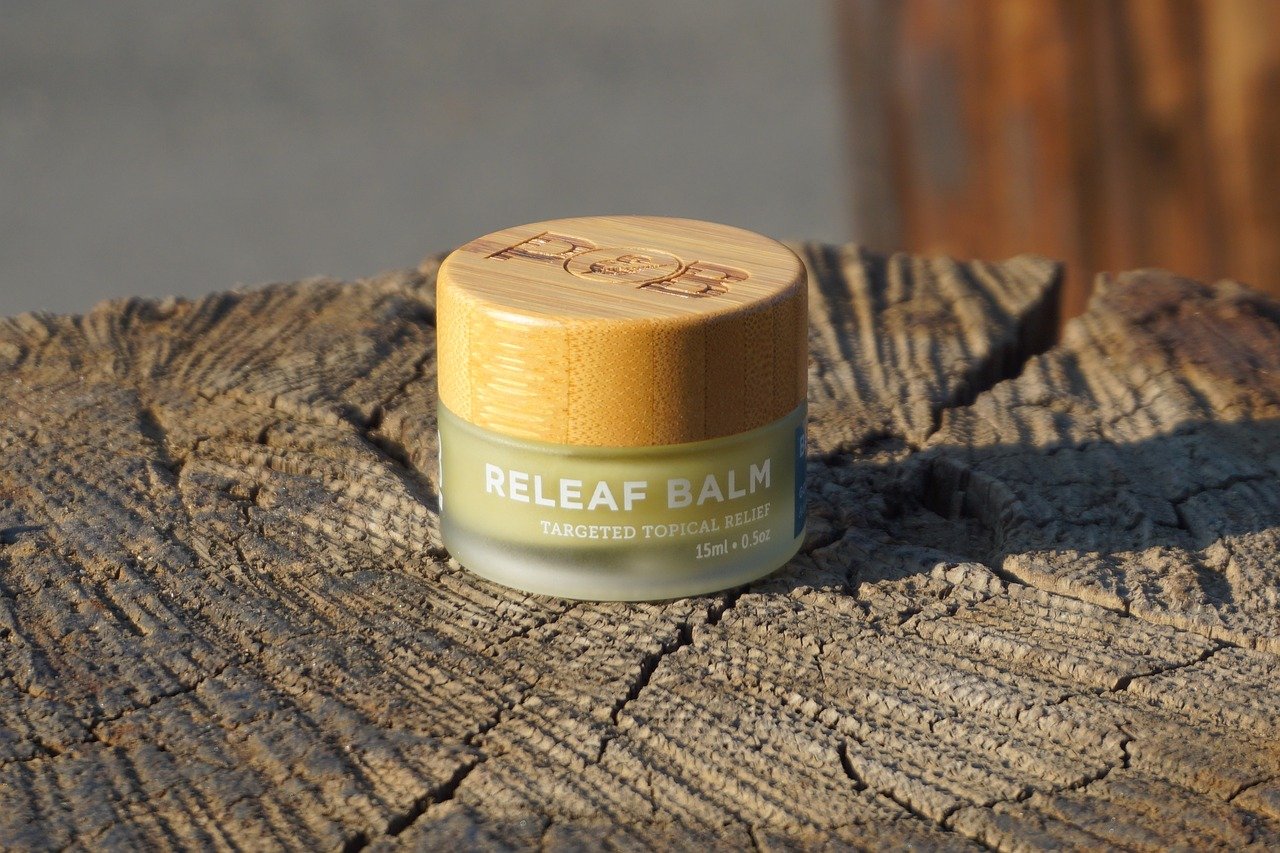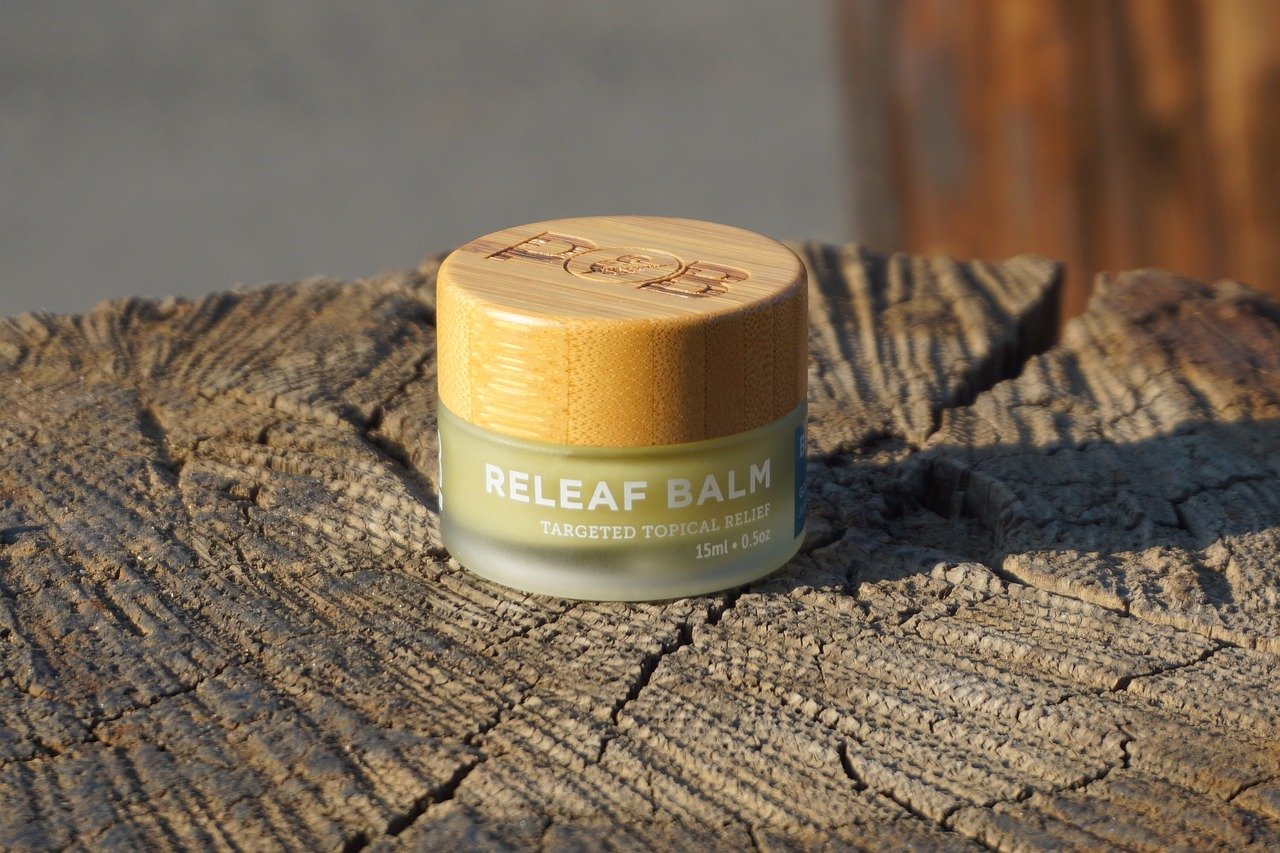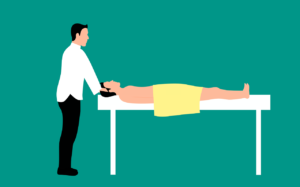
Have you ever woken up in the morning with neck and upper back pain after a seemingly restful night’s sleep? The uncomfortable sensation can put a damper on your day, affecting your productivity and overall well-being. In this article, we will explore effective techniques on how to alleviate neck and upper back pain after sleeping, helping you start your mornings feeling refreshed and pain-free. So, if you’re tired of waking up with that painful stiffness, keep reading to discover simple and practical solutions that will make a significant difference in your daily life.

Causes of neck and upper back pain after sleeping
Improper sleeping posture
One of the main causes of neck and upper back pain after sleeping is improper sleeping posture. When you sleep in a position that puts strain on your neck and upper back, it can lead to discomfort and pain. For example, sleeping on your stomach with your head turned to the side can strain the neck muscles and lead to pain. It is important to find a sleeping position that allows your spine to align properly and reduces stress on your neck and upper back.
Inadequate pillow support
Using a pillow that does not provide adequate support can also contribute to neck and upper back pain after sleeping. Your pillow should provide support to the natural curve of your neck and keep your head aligned with your spine. If your pillow is too flat or too thick, it can cause misalignment and strain on the neck and upper back muscles. It is important to choose a pillow that suits your sleeping position and provides proper support.
Overuse of electronic devices before bedtime
Using electronic devices such as smartphones and tablets before bedtime can have a negative impact on your sleep quality and contribute to neck and upper back pain. The blue light emitted by these devices can suppress the production of melatonin, a hormone that regulates sleep. Additionally, constantly looking down at your device can strain your neck and upper back muscles. It is recommended to limit the use of electronic devices before bed to promote better sleep and reduce pain.
Sleeping on a worn-out mattress
Sleeping on a worn-out mattress can also be a cause of neck and upper back pain after sleeping. An old and sagging mattress does not provide adequate support to your body, causing your spine to be misaligned and your muscles to be strained. It is important to invest in a quality mattress that provides proper support and comfort. A mattress that is too firm or too soft can also contribute to pain, so finding the right level of support is crucial.
Tension and stress
Tension and stress can cause muscle tension and contribute to neck and upper back pain. When you are stressed, your muscles tend to tighten up, leading to discomfort and pain. This tension can be carried into your sleep and result in waking up with neck and upper back pain. Managing stress levels through relaxation techniques or seeking professional help can help alleviate pain and improve sleep quality.
Medical conditions
Certain medical conditions can also be underlying causes of neck and upper back pain after sleeping. Conditions such as cervical disc degeneration, osteoarthritis, and fibromyalgia can cause chronic pain and discomfort that is exacerbated during sleep. If you suspect that a medical condition is causing your neck and upper back pain, it is important to seek medical advice for proper diagnosis and treatment.
Preventing neck and upper back pain after sleeping
Choosing the right pillow
To prevent neck and upper back pain after sleeping, it is important to choose a pillow that provides proper support and comfort. Look for a pillow that suits your sleeping position and provides support to the natural curve of your neck. Pillows made of memory foam, latex, or feather down can offer good support and pressure relief. It is recommended to replace your pillow every 1-2 years to ensure it continues to provide adequate support.
Selecting a supportive mattress
Investing in a supportive mattress is essential for preventing neck and upper back pain after sleeping. Look for a mattress that provides proper support to your body and promotes spinal alignment. Medium-firm mattresses are generally a good option as they provide a balance between support and comfort. It is also important to consider your individual preferences and any specific medical conditions when selecting a mattress.
Maintaining a proper sleeping posture
Maintaining a proper sleeping posture is crucial for preventing neck and upper back pain after sleeping. Avoid sleeping on your stomach as it can strain your neck and upper back muscles. Instead, try sleeping on your side with a pillow that adequately supports the natural curve of your neck. If you prefer sleeping on your back, use a pillow that supports the curve of your neck and place a small pillow under your knees to alleviate strain on your back.
Limiting electronic device use before bed
To prevent neck and upper back pain after sleeping, it is important to limit the use of electronic devices before bed. The blue light emitted by these devices can disrupt your sleep and contribute to muscle tension. Establish a technology-free zone in your bedroom and engage in relaxing activities such as reading or listening to calming music before bed.
Managing stress levels
Managing stress levels is essential for preventing neck and upper back pain after sleeping. Incorporate stress management techniques into your daily routine, such as meditation, deep breathing exercises, or engaging in activities you enjoy. Finding healthy outlets for stress can help reduce muscle tension and promote better sleep.
Seeking medical advice
If you have tried various preventive measures and are still experiencing neck and upper back pain after sleeping, it is important to seek medical advice. A healthcare provider can assess your symptoms, identify any underlying medical conditions, and recommend appropriate treatment options. They may refer you to a specialist such as a physical therapist or chiropractor for further evaluation and management.

Exercises and stretches to relieve neck and upper back pain after sleeping
Neck range of motion exercises
Neck range of motion exercises can help alleviate stiffness and pain in the neck after sleeping. These exercises involve gently moving your neck in various directions to improve flexibility and reduce tension. Examples of neck range of motion exercises include neck rotations, neck tilts, and neck stretches. It is important to perform these exercises slowly and smoothly, without forcing any movement that causes pain.
Upper back stretches
Stretching the upper back can help relieve tension and pain caused by poor sleeping posture or muscle tightness. Upper back stretches can be done using a foam roller, a stability ball, or by performing simple stretches such as arm swings or shoulder blade squeezes. These stretches can help increase flexibility and reduce muscle tension in the upper back.
Chest opening stretches
Opening up the chest can help alleviate tightness in the muscles of the upper back and improve posture. Chest opening stretches involve gently stretching the muscles in the front of the chest to counteract the hunching posture that often occurs during sleep. Examples of chest opening stretches include standing or seated chest stretches, doorway stretches, or wall stretches.
Shoulder rolls
Performing shoulder rolls can help relieve tension and improve mobility in the shoulders and upper back. Shoulder rolls involve rolling your shoulders in a circular motion, both forwards and backwards. This exercise can help loosen tight muscles and promote relaxation in the upper back and neck.
Chin tucks
Chin tucks are an exercise that can help strengthen the muscles in the neck and improve posture. To do a chin tuck, gently pull your chin back, as if you were creating a double chin. Hold this position for a few seconds, then relax. Repeat this exercise several times throughout the day to help alleviate neck and upper back pain.
Shoulder blade squeezes
Shoulder blade squeezes can help strengthen the muscles in the upper back and improve posture. To perform this exercise, squeeze your shoulder blades together, as if you were trying to hold a pencil between them. Hold this position for a few seconds, then release. Repeat this exercise several times to help alleviate tension and pain in the upper back.
Self-care techniques to alleviate neck and upper back pain after sleeping
Applying heat or cold therapy
Applying heat or cold therapy can help relieve neck and upper back pain after sleeping. Heat therapy, such as using a warm compress or taking a warm shower, can help relax tense muscles and improve blood circulation. Cold therapy, such as applying an ice pack or using a cold gel pack, can help reduce inflammation and numb pain. It is important to use heat or cold therapy for short durations and follow proper safety guidelines.
Using a foam roller or massage ball
Using a foam roller or massage ball can help release tension and knots in the muscles of the neck and upper back. Roll the foam roller or massage ball along the muscles, applying gentle pressure to any areas of tightness or discomfort. This self-massage technique can help improve blood flow, reduce muscle tension, and alleviate pain.
Trying relaxation techniques
Relaxation techniques such as deep breathing exercises, progressive muscle relaxation, or guided imagery can help alleviate neck and upper back pain after sleeping. These techniques promote relaxation and reduce muscle tension, helping to relieve pain and improve sleep quality. Practicing these techniques regularly can also help manage stress levels and promote overall well-being.
Using a neck brace or collar
A neck brace or collar can provide support and stability to the neck, helping to alleviate pain and promote proper alignment. These devices can be especially helpful for individuals with neck injuries or conditions that require immobilization. However, it is important to use neck braces or collars under the guidance of a healthcare provider to ensure proper fit and usage.
Practicing good posture throughout the day
Practicing good posture throughout the day can help prevent and alleviate neck and upper back pain after sleeping. Maintaining proper alignment of the spine and avoiding slouching can reduce stress on the neck and upper back muscles. Be mindful of your posture when sitting, standing, and walking, and consider using ergonomic supports such as a supportive chair or a standing desk.
Using an ergonomic workstation setup
An ergonomic workstation setup can help reduce the risk of neck and upper back pain after sleeping. Ensure that your workstation is set up properly, with your computer monitor at eye level, your keyboard and mouse at a comfortable height, and your chair providing adequate support to your back. Making these small adjustments can help maintain proper posture and reduce strain on the neck and upper back muscles.

Seeking professional help for neck and upper back pain after sleeping
Consulting a healthcare provider
If self-care techniques and preventive measures do not provide relief from neck and upper back pain after sleeping, it is important to consult a healthcare provider. They can assess your symptoms, perform a physical examination, and order any necessary diagnostic tests. Based on the findings, they can recommend appropriate treatment options or refer you to a specialist if needed.
Getting a professional massage
Professional massage therapy can be an effective treatment option for neck and upper back pain after sleeping. A skilled massage therapist can target the specific muscles and areas of tension, using techniques such as deep tissue massage or trigger point therapy to relieve pain and promote relaxation. Regular massage sessions can help alleviate chronic pain and improve sleep quality.
Undergoing physical therapy
Physical therapy can be beneficial for individuals experiencing persistent neck and upper back pain after sleeping. A physical therapist can develop a personalized treatment plan that includes exercises, stretches, and manual therapy techniques to address muscle imbalances, improve posture, and relieve pain. They can also provide guidance on proper ergonomics and sleeping positions to prevent further discomfort.
Exploring alternative therapies
Alternative therapies such as acupuncture, chiropractic care, or herbal remedies may provide relief for neck and upper back pain after sleeping. Acupuncture involves inserting thin needles into specific points on the body to balance energy and alleviate pain. Chiropractic care focuses on spinal adjustments to improve alignment and reduce pain. Herbal remedies such as herbal supplements or topical creams may also be used to alleviate pain and promote healing. It is important to consult a qualified practitioner before trying any alternative therapies.
Considering chiropractic care
Chiropractic care can be an effective treatment option for individuals with neck and upper back pain after sleeping. Chiropractors use spinal adjustments and manual manipulation techniques to improve spinal alignment, reduce muscle tension, and alleviate pain. They may also provide advice on posture, exercise, and lifestyle modifications to prevent further pain and discomfort.
Receiving acupuncture
Acupuncture is a traditional Chinese medicine technique that can be used to alleviate neck and upper back pain after sleeping. It involves the insertion of thin needles into specific points on the body to stimulate energy flow and promote pain relief. Acupuncture has been found to be effective in reducing pain and improving sleep quality. It is important to find a licensed acupuncturist who can provide safe and effective treatment.
Tips for a better night’s sleep to prevent neck and upper back pain
Establishing a consistent sleep schedule
Establishing a consistent sleep schedule can help regulate your body’s internal clock and promote better sleep quality. Try to go to bed and wake up at the same time every day, even on weekends. This can help train your body to feel sleepy and awake at the appropriate times, reducing the likelihood of neck and upper back pain after sleeping.
Creating a relaxing bedtime routine
Creating a relaxing bedtime routine can signal to your body that it is time to wind down and prepare for sleep. Engage in activities that promote relaxation, such as taking a warm bath, reading a book, or practicing gentle stretching or meditation. Avoid stimulating activities or bright screens in the hour leading up to bedtime.
Creating a comfortable sleep environment
Creating a comfortable sleep environment can contribute to better sleep and reduce the risk of neck and upper back pain after sleeping. Ensure that your mattress, pillows, and bedding are clean and provide proper support and comfort. Adjust the temperature, lighting, and noise levels in your bedroom to create a soothing and restful environment.
Avoiding caffeine and heavy meals before bed
Avoid consuming caffeine and heavy meals before bedtime as they can interfere with your sleep quality. Caffeine is a stimulant that can keep you awake and make it difficult to fall asleep. Heavy meals can cause indigestion and discomfort that can disrupt your sleep. Instead, opt for light and nutritious snacks if you need to eat before bed.
Engaging in regular exercise
Engaging in regular exercise can promote better sleep and help prevent neck and upper back pain after sleeping. Physical activity can reduce stress, improve circulation, and promote relaxation. However, it is important to avoid exercising too close to bedtime as it can increase alertness and make it harder to fall asleep. Aim to complete your exercise routine at least a few hours before bedtime.
Using a supportive sleep position
Using a supportive sleep position can help prevent neck and upper back pain after sleeping. For back sleepers, using a pillow that supports the natural curve of the neck and placing a small pillow under the knees can help maintain proper alignment. Side sleepers should choose a pillow that fills the gap between the shoulder and the ear to support the neck. Avoid sleeping on your stomach as it can strain the neck and upper back muscles.
When to seek medical attention for neck and upper back pain after sleeping
Persistent or worsening pain
If you experience persistent or worsening neck and upper back pain after sleeping that does not improve with self-care measures, it is important to seek medical attention. Persistent pain may be a sign of an underlying medical condition that requires further evaluation and treatment.
Pain accompanied by other symptoms
If you experience neck and upper back pain after sleeping accompanied by other symptoms such as numbness, tingling, weakness, or radiating pain, it is important to seek medical attention. These symptoms may indicate a more serious underlying condition that requires prompt medical evaluation.
Recent injury or trauma
If you have recently experienced a neck or upper back injury or trauma, and you are experiencing pain after sleeping, it is important to seek medical attention. It is possible that the injury or trauma has caused damage that requires medical intervention.
Pre-existing medical conditions
If you have pre-existing medical conditions such as arthritis or a herniated disc, and you are experiencing neck and upper back pain after sleeping, it is important to seek medical attention. These conditions may require specific treatment and management strategies to alleviate pain and improve sleep quality.
Difficulty sleeping or reduced quality of sleep
If neck and upper back pain after sleeping is causing difficulty falling asleep or staying asleep, and it is significantly impacting your sleep quality, it is important to seek medical attention. Poor sleep can have a negative impact on your overall health and well-being, and it is important to address the underlying causes of pain to improve sleep quality.
Conclusion
Taking proactive steps to prevent and alleviate neck and upper back pain after sleeping can greatly improve one’s overall well-being and sleep quality. By addressing the root causes such as improper sleeping posture, inadequate pillow support, overuse of electronic devices, sleeping on a worn-out mattress, tension and stress, and underlying medical conditions, individuals can wake up feeling refreshed and pain-free. Incorporating preventive measures, such as choosing the right pillow, selecting a supportive mattress, maintaining proper sleeping posture, limiting electronic device use before bed, managing stress levels, and seeking medical advice when necessary, can help prevent neck and upper back pain after sleeping. Additionally, incorporating exercises and stretches, self-care techniques, and seeking professional help when needed, can further alleviate pain and discomfort. By following these tips and making sleep a priority, individuals can optimize their sleep quality and improve their overall well-being.







